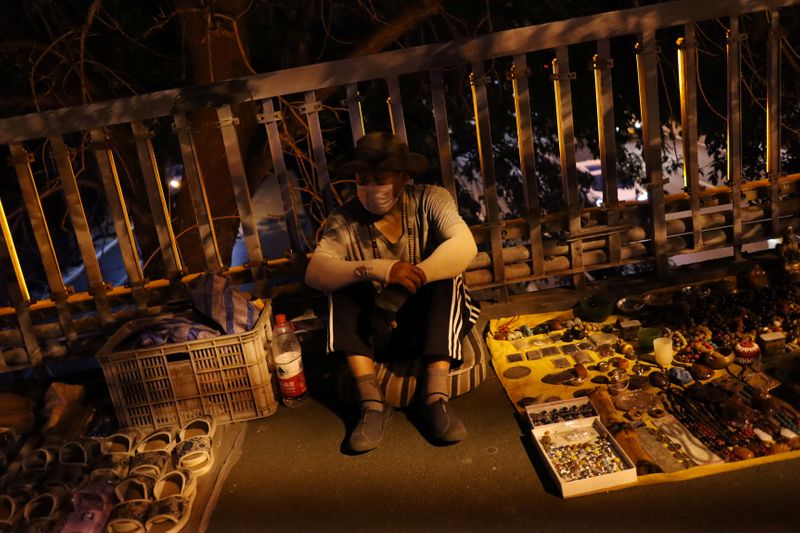This post was originally published on this site
https://i-invdn-com.akamaized.net/trkd-images/LYNXMPEG540M0_L.jpg
BEIJING (Reuters) – Three weeks ago, Beijing authorities swooped in on Shan Peng and her makeshift street stall, seizing her merchandise – yogurt and casual pants – and even her electric tricycle.
She was used to police evictions.
“Just raise your gun an inch, sir, and we peddlers would be able to get by,” she would say, begging them to let her off.
In the same busy alley today, the 51-year-old was selling shrink-wrapped bacon out of a cardboard box – unharassed.
Shan hoped to take home at least 100 yuan ($14) a day. She has mouths to feed – her elderly mother, a dog she rescued from a shelter, and herself, a cancer patient.
Street stalls, seen officially as a blight on China’s modernising urban landscape, are making an unexpected comeback in a year of rare economic pain.
At the annual session of parliament last month, the livelihoods of ordinary people were widely discussed. Afterwards, Premier Li Keqiang told reporters 600 million people still live on monthly salaries of 1,000 yuan.
The spectre of mass unemployment has sharpened the focus of China’s top leadership on low-income groups with little financial backup to cope with job losses.
In a U-turn, authorities said last week local governments will not be assessed by the number of roadside vendors in their cities this year. In the past, municipal officials were awarded high marks for eradicating hawkers.
The premier also gave his blessing. During a visit to a seaside town in Shandong province, Li said the “street stall economy” was the light of humanity and the vitality of China.
READY, GET SET
With uncharacteristic speed, cities like Shanghai and Chengdu have taken steps to promote their street stall economies. Even Wuhan – former epicentre of China’s COVID-19 outbreak – joined in as the coronavirus threat receded.
E-commerce giants pledged support. Alibaba (NYSE:BABA) and JD (NASDAQ:JD).com said they would sell merchandise to street-stall owners on credit. Pinduoduo (NASDAQ:PDD) will offer discounts on a range of “must-haves” for setting up a stall such as flashlights and small fans.
Wuling Motors said a newl mini truck specially designed for street stalls received more orders on Wednesday alone than all of May, official media reported. Its Hong Kong shares rose over 200% this week.
Dongfeng Motor Group and Jiangling Motors Corp (JMC) said some of their vans can be modified to suit vegetable sellers or BBQ street food vendors.
Meanwhile, a PDF book of unknown authorship on how to be a successful street peddler found fame on social media this week.
According to “The Secret Manual of Street Stall Business”, only the latest mobile phones must be sold, and there should be no displays of bras and panties, for “no young girl would dare to buy them in the open”.
LUNCH MONEY
Some economists say street stalls will not make much difference to gross domestic product, but reflect the enormous pressure on the government to stabilise employment and curb any social unrest.
“It’s an emergency and temporary solution to the unemployment woes brought on by the coronavirus,” said Nie Wen, economist at Shanghai-based Hwabao Trust.
Wang Kang, 38, works at a mobile payment company. But with his salary slashed by 30%, he started hawking t-shirts and toys in the evenings.
“I’m here because I need the money,” he said. “Even if it’s just tens of yuan per night, that’s enough for lunch.”
Yi Shaohua, a researcher at the Chinese Academy of Social Sciences, China’s top state think-tank, said the street stall campaign will at least help lift people’s spirits.
“The upshot is it’ll get people out of their homes, add liveliness to the streets and thus help boost economic confidence,” Yi said.
(This story was refiled to fix typo in paragraph 13)

